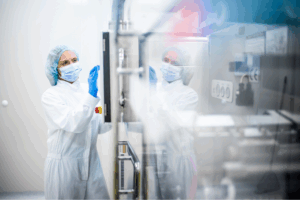July 10, 2025
For employees who drive as a part of their job, knowing the key steps to take immediately following an accident can help them to be better prepared and reduce the chances of a nuclear verdict. It’s important to understand the risks and how their actions can impact the outcome.
What is a nuclear verdict?
A nuclear verdict is an exceptionally high jury award that far exceeds expectations and typical precedents for similar cases. These verdicts, often in the tens or hundreds of millions of dollars, can have seismic implications for defendants, industries and the broader legal landscape. Types of awards include:
- Economic damages ― Intended to compensate plaintiffs for actual losses, these compensatory damages cover medical bills, lost wages and ongoing care.
- Non-economic damages ― These cover intangible losses that don’t have clear monetary value such as disfigurement, disability, emotional distress, pain and suffering, or loss of enjoyment of life.
- Punitive damages ― They are awarded to punish the defendant for particularly reckless, malicious or egregious behavior, and designed to deter others from similar conduct. They are not intended to compensate the plaintiff but to send a strong message to the defendant about the consequences of their behavior. This type of award is often granted in cases where a company is found to be grossly negligent, like failing to address safety violations, and might be imposed in addition to compensatory awards.
Tactics for nuclear verdicts
- Emotional decision-making ― Juries are more likely to deliver nuclear verdicts when a case evokes strong emotional responses, such as anger or empathy. Plaintiffs’ attorneys often emphasize narratives that highlight suffering and villainize defendants
- Media influence ― High-profile cases with sensationalized coverage can set benchmarks for what juries consider “reasonable” punitive damages, even if those benchmarks are unrealistic.
- Reptile theory ― This trial strategy leverages jurors’ primal instincts to protect themselves and their communities. By framing defendants as threats to public safety, plaintiffs’ attorneys can elicit fear-based punitive responses. It is not about the accident, but about the defendant, their business and their safety program.
Industry statistics and impact
According to the auto liability state of the line report, Sedgwick’s new auto liability claim volume increased 7.4% from 2023 to 2024. Looking at claims that became litigated, 59% had representation in place within 24 hours of first notice and 70% had representation in place within 14 days. Below are some key industry statistics related to the impact:
- Litigation costs continue to rise with a 25% increase in 2024 compared to 2023. Average incurred values on new auto liability bodily injury litigated claims are 5.6 times that of non-litigated claims.
- Approximately 45.9% of the awards ranged from $10 million to $20 million, 35.6% ranged from $20 million to $50 million, and 18.6% exceeded $50 million, with some surpassing $100 million.
- Florida, California and New York produced the most nuclear verdicts during the study period, with a combined total of 575 verdicts worth over $10 million.
The financial and emotional effects
Individuals, businesses and attorneys deal with different challenges when they are involved in a nuclear verdict.
- Defendants ― Nuclear verdicts can have catastrophic financial and reputational consequences for businesses and employees. Small to mid-sized companies risk insolvency, while larger corporations face significant financial hits and damage to public trust.
- Insurers ― Insurance companies are grappling with the growing unpredictability of jury awards. Over the past five years, there has been a notable increase in nuclear verdicts, which are awards exceeding $10 million. These verdicts are not only becoming more frequent but also larger in size, according to Insurance Journal. In 2024, thermonuclear verdicts nearly doubled compared to the previous year, with a total of 49 cases exceeding $100 million. This rise has contributed to higher liability premiums and more stringent underwriting practices, which, in turn, affect the affordability of coverage for businesses.
- Legal system ― Nuclear verdicts can undermine confidence in the legal system by creating perceptions of inconsistency and unpredictability. Critics argue that these awards often reflect juror emotion rather than a balanced assessment of damages.
Step 1: Ensure safety and seek medical attention
Immediate actions
Identify any injuries and ensure everyone’s safety; not only for your employees, but third parties. Determine if immediate medical intervention is needed.
Observations
Keep your eyes and ears open. Look for any physical signs of injury, such as bumps, bruises, lacerations, limping, guarding or other signs of impairment. It’s also important to listen to comments made by the claimant directly following the accident like comments about distracted driving, mobile usage, watching a movie or drowsy driving.
Step 2: Contact law enforcement
Importance of police reports
Documenting the accident is a valuable step and should include the date, time, exact location and facts of the loss. Also, some state laws mandate that any injury or over $1,000 in damages must be reported. Key benefits:
- The information provides evidence for your carrier and helps the adjuster determine liability.
- The reports protect your interests and reduce the risk of fraud.
Interaction with law enforcement
Emotions can run high after an accident. Even if the situation is tense, always remain calm and composed when speaking to the police. Provide factual information without admitting fault.
Step 3: Gather evidence and information
Collecting information
Obtain as much information as possible on the third party, and any witnesses and passengers. Be sure to gather the following details:
- Full name/address/phone number
- Insurance carrier
- Claimant vehicle (year/make/model/color/license plate)
Photographic evidence
Obtain photos of all vehicles involved, debris, road marks, any landmarks, nearby buildings, road signs and signs of injury. Why is this important? Documenting the scene assists with reconstruction (if needed), and helps determine the exact location, force of impact and obstructions. It also assists in determining if surveillance cameras are in the area. Additionally, having photos of the damages and injuries can help prevent fraudulent claims.
Step 4: Avoid admitting fault
Legal implications
Admitting fault at the scene of an accident will be used against you. If you admit fault, even inadvertently, you could be held legally responsible for damages, including bodily injury and property damage. This is true even when you truly believe you are at fault.
Communication tips
Avoid elaborating on your thoughts or opinions about the accident to the other parties, witnesses and investigating agencies.
Step 5: Notify your insurance company or TPA
Carrier/TPA notification
Once your employees are safe, they should notify their insurance carrier. The sooner the carrier or third party administrator (TPA) is notified, the sooner they can begin the investigation. Depending on the severity of the accident, your TPA or carrier may engage defense counsel early on to assist with the analysis and retention of experts and to help secure evidence, all while providing attorney-client privilege to the investigation.
Sedgwick has an urgent response team that assists clients after catastrophic accidents. Our experts are available 24/7/365 to coordinate the investigation and response. One of our complex claims advisors will immediately begin working with your claims team to help control the loss, offering assistance to those injured, and protecting your employees, your company’s legal interest and brand.
Our services in action
One of our client’s employees was involved in an accident while traveling down a rural highway at 4:30 a.m. and called our urgent response line. A pedestrian was walking in the middle of the road against traffic and the driver didn’t see him right away because there was a car approaching with their brights on. They were able to swerve so just the side mirror struck the pedestrian, but at 45 miles an hour, it was still a significant impact. Within 25 minutes of the call, we had somebody at the scene conducting an investigation, protecting the evidence and securing the loss.
Conclusion
If you are involved in an auto accident, the benefits of being prepared and proactive can have a ripple effect. By following the five steps above, you can reduce the risk of a possible nuclear verdict and help protect yourself, your business and your employer.



